Recycling and rehashing, pretty much the same thing we have from the previous outings but worse.
Ip Man 4: The Finale is the very definition of lazy film making, it recycles pretty much everything that has come before and amplifies the xenophobia by ten and with each successful outing the quality seems to drop significantly.
After the passing of his wife Ip Man is alone to bring up his angered fuelled son Ip Ching. Having been diagnosed with cancer Ip Man makes a final attempt to offer his son a better way of living, believing that America will be the best choice after witnessing the success of his former student Bruce Lee.
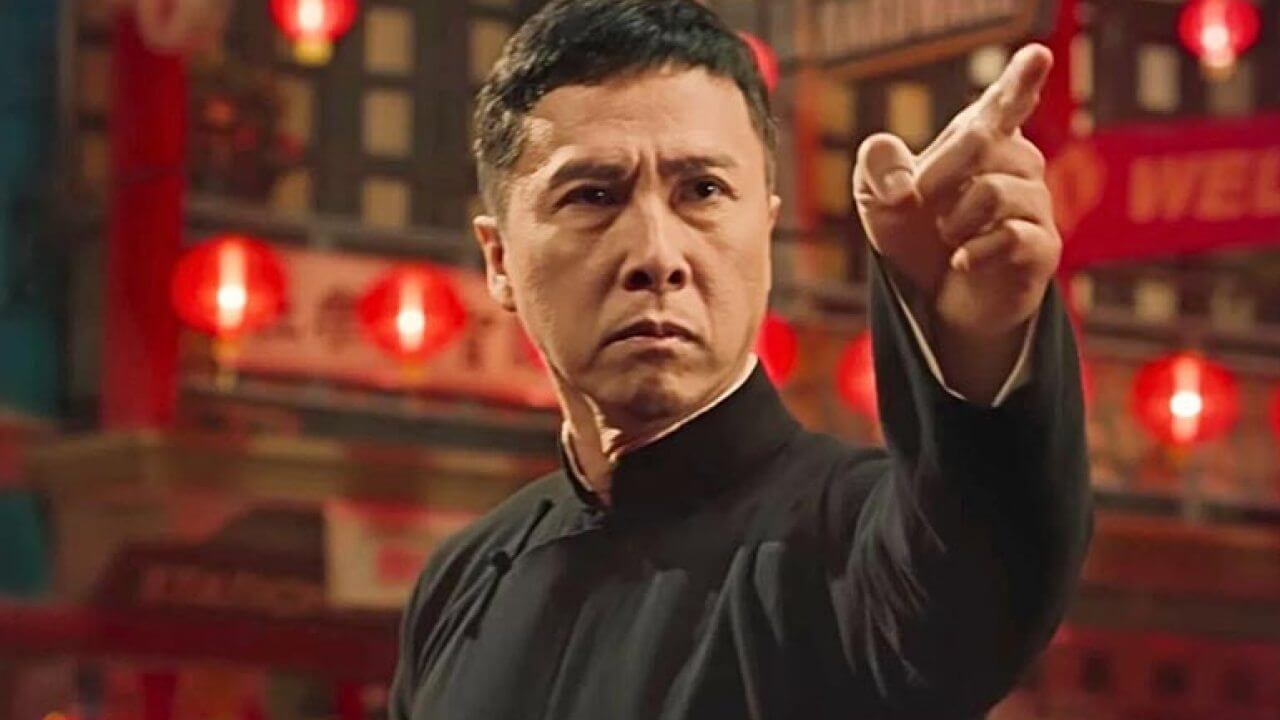
Leaving his son to the aid of Detective Po, Ip Man ventures to San Fransisco to look for a suitable school for his son but upon arrival, he is confronted by the local Chinese Benevolent Association (CBA), lead by Master Wan believing that Ip Man’s former student Bruce Lee is challenging their customs and offending their traditions by teaching foreigners the Chinese Kung Fu arts.
Meanwhile, Master Wan’s daughter Wan Yonah experience racial abuse by her peers at school. During an attack on Wan Yonah, a chance encounter sees Ip Man step in to save the day which incurs the wrath of an immigration officer abusing his position of power.
Meanwhile, Bruce Lee’s student, staff sergeant Hartman Wu strongly pushes to have Wing Chun taught at there military camp but Sergeant Barton Geddes carries a great disdain towards all races, black and yellow alike, so he goes through all means to stop Hartman’s overzealous push for Wing Chun, going as far as to sending his trusted sidekick Colin to crash the local Chinese celebratory ceremony.

The immigration officer soon catches up to Master Wan and it is up to Ip Man to save all humanity, restore honor and stop the racist Americans.
It seems the main cause of the film is to paint the foreigners as complete A-holes who will do everything and anything to demean and destroy the Chinese.
It’s been an easy tool for filmmakers to rouse the audience and drum up pride but it makes everything seem so superficial. There is just so much going on in the film often meandering all over the place with every story point used to scream racism and how great the Chinese are.
Wan Yonah’s school bullying could have been exorcised and it would have helped ease the pain of watching the film. The Bruce Lee plotline is also an incredibly weak inclusion not going anywhere in particular but a throwaway segment.

Everything in place feels like fan service for fan service sake but handled with a subtlety of a sled hammer, even the inclusion of a karate master pointlessly carries nunchakus when battling Bruce Lee.
There are so many lapses in logic and it feels like the filmmakers just didn’t care; Why would someone so hating on Chinese martial arts condone learning the Asian art of karate? Why do the marines do nothing else but use their time and resources to bully the Chinese?
Yuen Woo-Ping returns once again as an action choreographer but sadly he fails to deliver anything close to exciting. In 2015 Ip Man 3’s choreography felt overlong and repetitive and greatly ineffective in combat, Ip Man 4: The Finale reigns in the length of the fights but once again lacks any real power or creativity.
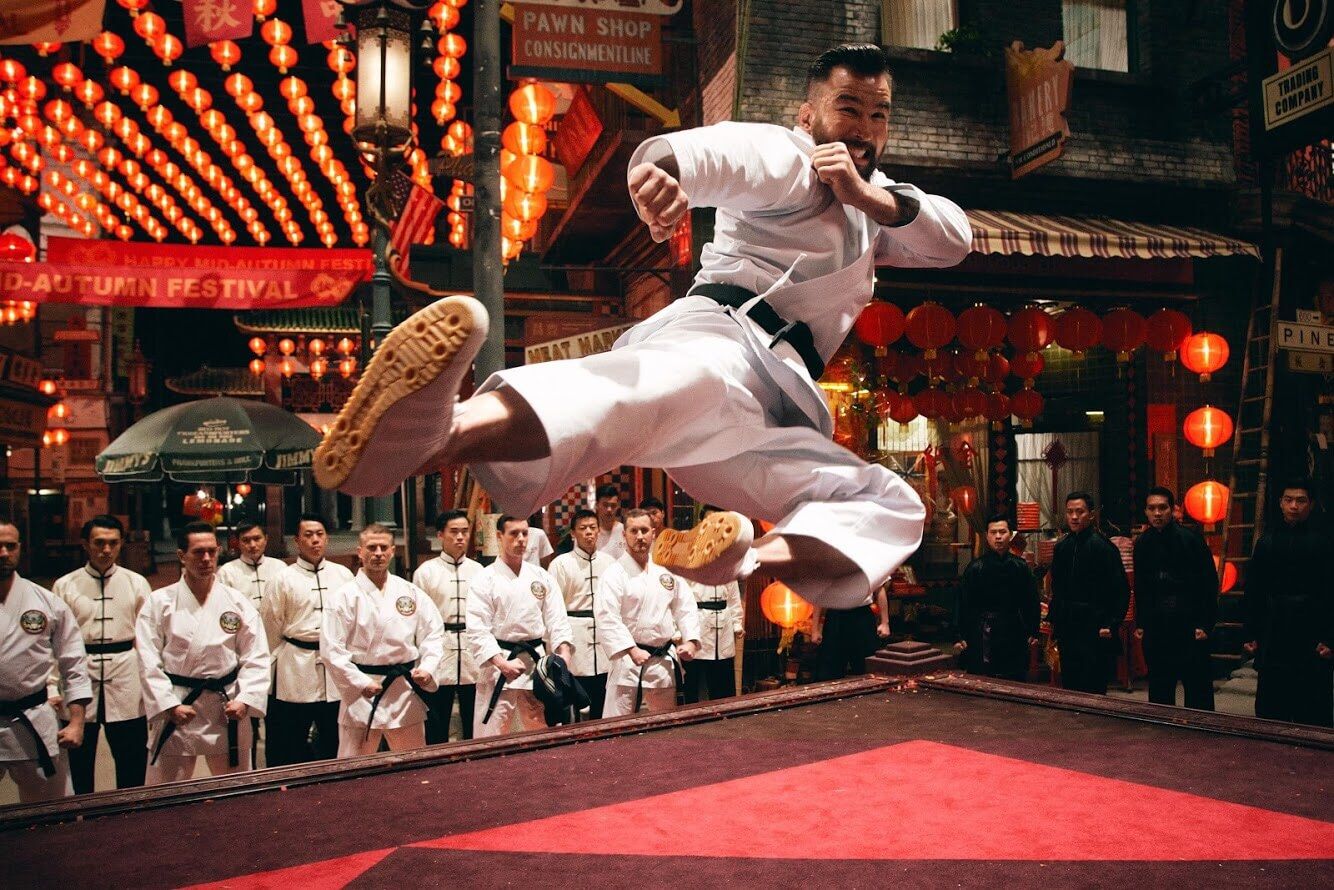
After a slew of sequels and spin-offs Wing Chun has become a chore to watch, the slappy hand techniques have now become a joke often with the opponent cowering behind his arm just for Yen to pummel him with hundreds of ineffective punches then the opponent counters with a single powerful attack.
Fights are plentiful throughout but sadly its a case of quantity than quality. A midway fight between Li Fei’s eagle claw and Chris Collins karate provides mild entertainment value but it’s rather short-lived.
Danny Chan has a random encounter with a karate master played by British martial artist Mark Strange in a back alley that feels staged but this is by far the most engaging fight scene of the whole film and that is not saying much. It is probably more to do with the fact that it is not the same monotonous Wing Chun fight scenes.
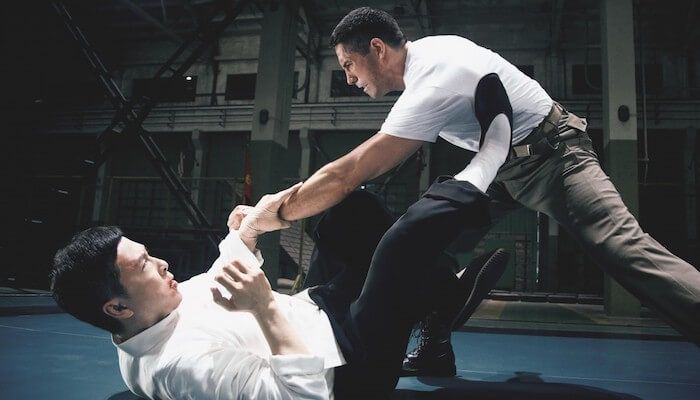
The final duel between Donnie Yen versus Scott Akins should have been a major highlight but it is filmed in such an intrusive way, with the camera is pushed in real tight and there are way too many snappy edits. The fight follows pretty much the same beats as they did in Ip Man 2’s finale and its predictable outcome removes any real sense of danger.
Both Chris Collins and Scott Adkins are supposed to be karate practitioners but the choreography offers little in the form of karate techniques, Adkins seems to fall to kickboxing techniques. All other martial arts masters are demonstrated as pathetic and incompetent (something similar to Ip Man (2008) and Ip Man 2 (2010)). Scott Adkins storms the CBA headquarters and singles handily demolish up to 10 masters without breaking a sweat.
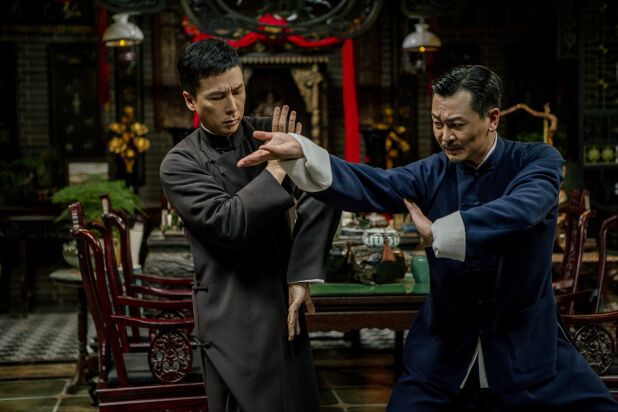
Donnie Yen feels outright bored and phoning in his performance, he walks through the fights without many emotions.
The ever-reliable Wu Yue provides a charismatic master and offers strict leadership and switches to a caring father with ease.
Vaness Wu gives an earnest performance but feels at odds with the proceedings, his devout commitment to Chinese kung fu does not always make sense and feels like a tool opposed to a natural character.
Danny Chan does what he has been doing in the past decade, posing as Bruce Lee, he’s by no means a great Bruce Lee but he’s become comfortable with the character sadly he offers little to the film and is quickly sidelined.
Poor old Lo Meng returns to the role that was introduced in Ip Man 2, playing the useless martial arts master and acts as a minor comic relief.
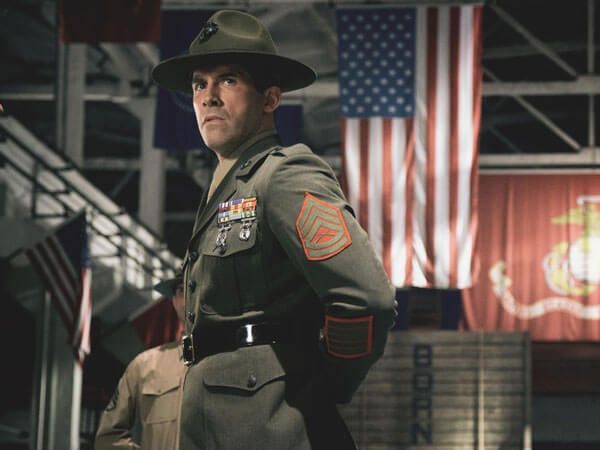
Scott Adkins does not always quite hit the mark with his American accent sometimes his inflections are not quite on point but are serviceable the majority of the time. Through no fault of either Chris Collins or Scott Adkins, their performances are insulting caricatures.
Just like with the dearly departed Darren Shahlavi’s performance in Ip Man 2, the filmmakers force the actors to hurl all rage, abuse, and anger in their performances which results in an overly exaggerated character and a script that gives them little else other than to racially insult every one of color.
While not quite up to Adkins and Collins insane levels of angst every other Caucasian actor spews hatred and lacks real conviction often feeling like they are reciting their lines.
Director Wilson Yip is not a great director by any means his output, though successful lacks any real signature and its evident that he is comfortable by just delivering the very basic needs of filmmaking, oppose to any genuine passion.
The unconvincing production design also hurts proceedings with sets failing to successfully replicate 1960’s America. The score is recycled throughout the saga and it goes through the basic motions of rousing the audience during the pummelling of evil foreigners.
Ip Man has pretty much become China’s superhero, he’s single handily saved the world; having successfully taken on the Japanese, the British, the Chinese and now the Americans. After four outings and various spin-offs, it has now become a chore so please stop.







